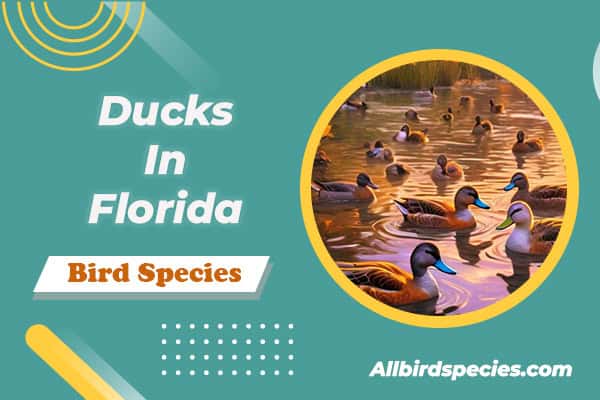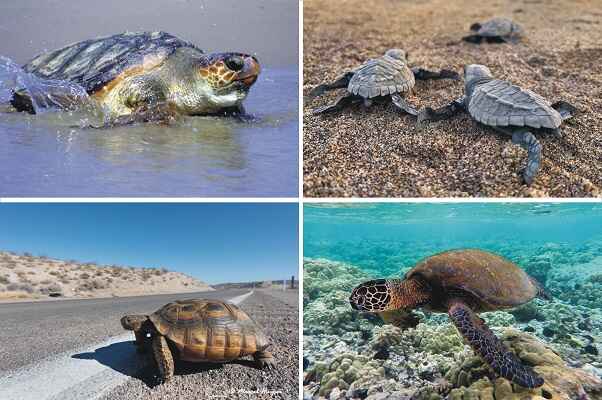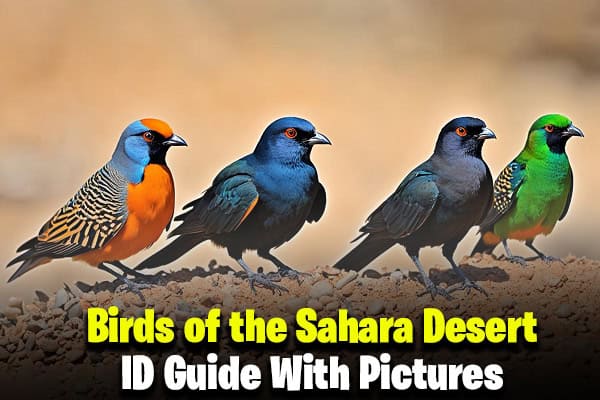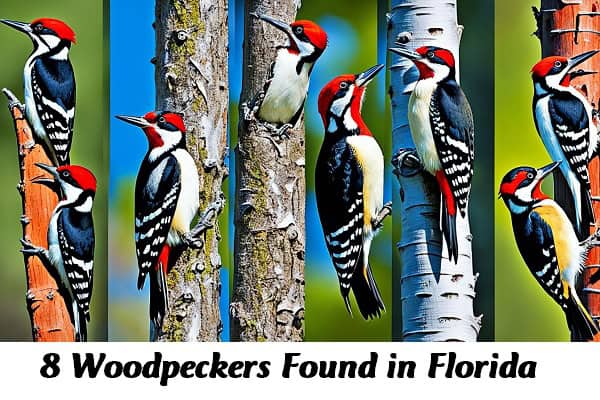15 Types of Ducks In Florida (ID Guide With Pictures)
Ducks in Florida captivate birdwatchers due to the state’s diverse habitats. In the subtropical south, rare bird species flock, creating ideal birding spots in protected areas. With nearly 550 bird species, Florida boasts a rich avian population, including 15 duck species. These ducks often display striking differences between males and females, with males sporting vibrant plumage. Plumage changes seasonally, adding to the allure of Florida’s birding scene.
Here we’ll learn about 15 different types of Ducks in Florida
1. Mallard
- Scientific name – Anas platyrhynchos
- Lifespan – 27 years
- Size – 19.7 to 25.6 in
- Weight – 26.5 to 56.4 oz
- Wingspan – 29.5 to 39.4 in
- Status – Least concern
Male mallard ducks have shiny green heads, yellow beaks, and thin white collars. Their backs are dark grey, bellies brownish-white, and breasts purply-brown. They also have black lower backs. Their upper wings are grey with a blue patch and a white edge, while their underwings are whitish.

Females are mostly brown with dark brown-edged feathers. They have blue patches on their wings with white edges. Their beaks are mostly grey with a bit of orange coloring.
2. Ring-necked Duck
- Scientific name – Aythya collaris
- Lifespan – 20 years
- Size – 15.3 to 18.1 in
- Weight – 17.3 to 32.1 oz
- Wingspan – 24.4 to 24.8 in
- Status – Least concern
Male Ring-necked Ducks have black upperparts and a black breast, with a white crescent marking near the belly. Their heads are dark and shiny, and their flanks are greyish. Their secondaries, or wing feathers, are pale, and their eyes are golden-yellow.

Females have dark brown backs, light brown sides, and white bellies. Their eyes are brown, and they have a whitish ring around their eyes.
Ring-necked Ducks are common in winter and can be found in ponds, marshes, lakes, rivers, and bays, like at Merritt Island National Wildlife Refuge.
3. Ruddy Duck
- Scientific name – Oxyura jamaicensis
- Lifespan – 13 years
- Size – 13.8 to 16.9 in
- Weight – 10.6 to 30 oz
- Wingspan – 22.1 to 24.4 in
- Status – Least concern
Male Ruddy Ducks have chestnut bodies, black crowns and napes, white cheeks, and blue bills. Their undersides are chestnut with white streaks on the belly, and their underwings are white.
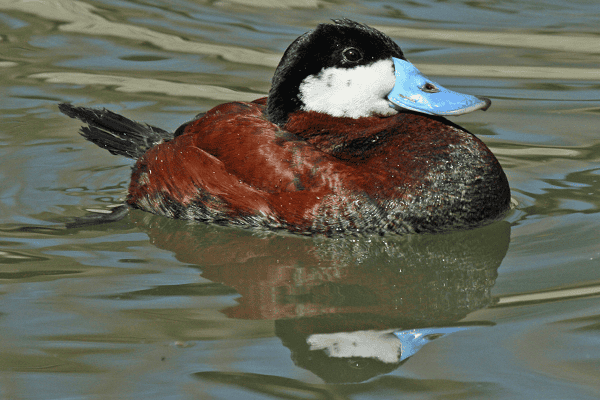
Females are brown with reddish tints. Their heads are whitish with a brown stripe on the side and streaking, along with a dark brown crown.
Ruddy Ducks are often found in the bays and ponds of Florida, especially in winter, but some stick around all year. You might spot them at Everglades National Park.
4. Mottled Duck
- Scientific name – Anas fulvigula
- Lifespan – 13 years
- Size – 18.5 to 22.5 in
- Weight – 24.7 to 43.8 oz
- Wingspan – 31.5 to 34.3 in
- Status – Least concern
Mottled Ducks don’t look very different between males and females. They both have a dark buff-brown body and a light buff-colored head. Brown streaks decorate their backs and sides, and they have a dark brown crown with a line through the eye. Their underwings are white, and they sport a dark blue speculum with a dark border.

There are small differences between males and females. Males have yellow beaks, while females have black beaks with an orange tip. Females are also a bit darker overall than males.
5. Wood Duck
- Scientific name – Aix sponsa
- Lifespan – 22 years
- Size – 18.5 to 21.3 in
- Weight – 16 to 30.4 oz
- Wingspan – 26 to 28.7 in
- Status – Least concern
Male Wood Ducks have flashy green feathers on their heads and backs, along with chestnut-colored chests and lower necks. They have striking patterns all over their bodies, with a noticeable crest on their heads. Their bellies and throats are white, and their underwings are grey. Buff-colored flanks add to their distinctive look. Their eyes are bright red, and they have white and red bills.
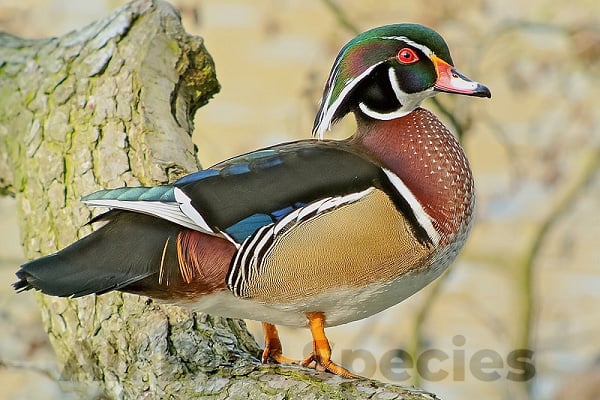
Females are mainly brown with a greyish head and white specks on their breasts. They have a white eye-ring that fades behind the eye. Their speculum, or wing patch, is dark blue with a white border.
6. Northern Pintail
- Scientific name – Anas acuta
- Lifespan – 22 years
- Size – 20.1 to 29.9 in
- Weight – 17.6 to 51.1 oz
- Wingspan – 31.5 to 37.4 in
- Status – Least concern
Male Northern Pintails have a stylish look, with dark brown heads and necks, accented by a white neckband that extends into their white breasts and undersides. Their upper sides are mostly grey, with a green wing patch and a white rear edge. Their under tail feathers and long tails are dark, and they have light blue bills.

Females are light brown with tan-colored heads and dark and white speckles across their bodies. Their wing patches are bronze-brown, and their bills are dark.
Northern Pintails are often seen in Florida during winter, especially at places like Saint Marks National Wildlife Refuge, where they hang out in lakes, wetlands, estuaries, salt marshes, and bays.
7. Blue-winged Teal
- Scientific name – Spatula discors
- Lifespan – 23 years
- Size – 14.2 to 16.1 in
- Weight – 8.1 to 19.2 oz
- Wingspan – 22.1 to 24.4 in
- Status – Least concern
Male Blue-winged Teals have reddish-brown bellies, breasts, and sides with spots. Their heads and necks are dark grey, with black throats and crowns, and a white crescent between the eye and the bill. Their upper sides are streaked dark brown, and their upper wings have white patches and a green wing patch.

Females are mostly brown with dark streaks on their heads and a dark brown crown. Their upper sides are dark brown with pale tips on their feathers, and their undersides are buff with brown speckles. Their upper wings show a green patch and a blue-grey patch.
Blue-winged Teals are super common all over Florida and can be spotted throughout the year, especially in winter. Look for them in wetlands and marshes, like at Saint Marks National Wildlife Refuge.
8. Green-winged Teal
- Scientific name – Anas crecca
- Lifespan – 20 years
- Size – 12.2 to 15.3 in
- Weight – 4.9 to 17.6 oz
- Wingspan – 20.5 to 23.2 in
- Status – Least concern
Male Green-winged Teals have grey upper parts with a hint of brown. Their wings are grey with a green patch. Their heads are cinnamon-colored with a green stripe above the eye that goes down the neck. Their breasts are yellowish-white with brown spots and white lines on each side. Their bellies are white, and their flanks and underwings are grey.
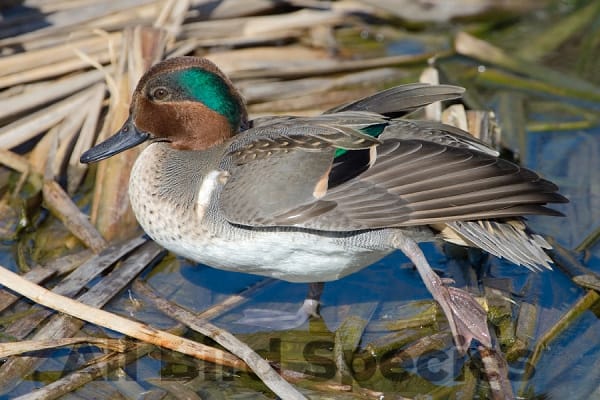
Females are mostly brown with light brown mottling on their backs. Their heads and necks are light brown, with a black stripe through the eye. Their throats and undersides are whitish, and their wing patches are green.
You can find Green-winged Teals in Florida during winter, mainly in wetlands, marshes, bays, and rivers. Myakka River State Park is one spot where you might see them.
9. Northern Shoveler
- Scientific name – Spatula clypeata
- Lifespan – 16 years
- Size – 17.3 to 20.1 in
- Weight – 14.1 to 28.9 oz
- Wingspan – 27.2 to 33.1 in
- Status – Least concern
Male Northern Shovelers stand out with their huge dark bills and yellow or orange eyes. They have green heads, black backs, and a greyish-blue patch on their shoulders. Their wings sport a green patch and a white stripe. Their bellies and sides are chestnut-colored, while their breasts are white and their vents are blackish.
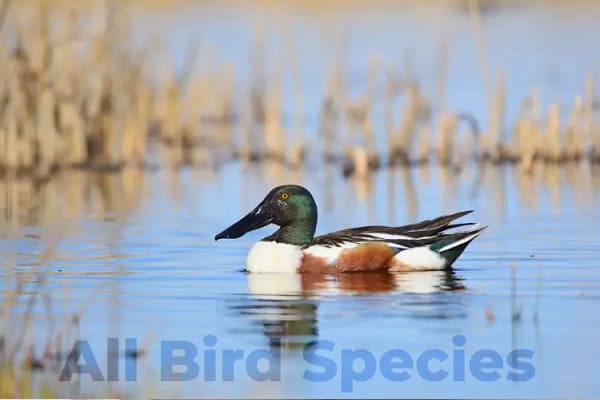
Females are brown with dark spots and a blue patch on their wings.
You can spot Northern Shovelers all year in Florida, especially in winter when their numbers increase. Look for them in wetlands, salt marshes, lakes, ponds, and estuaries, like at Merritt Island National Wildlife Refuge.
10. Black-bellied Whistling-duck
- Scientific name – Dendrocygna autumnalis
- Lifespan – 10 years
- Size – 18.5 to 22 in
- Weight – 23 to 36 oz
- Wingspan – 30 to 37 in
- Status – Least concern
Male and female Black-bellied Whistling-ducks look alike, with brown upper parts, black bellies and flanks, and tawny-brown lower necks and chests. Their underwings are blackish, and they have a white patch on their upper wings. Their heads and upper necks are grey with brown crowns, and they have pinkish-red beaks with white eye rings.
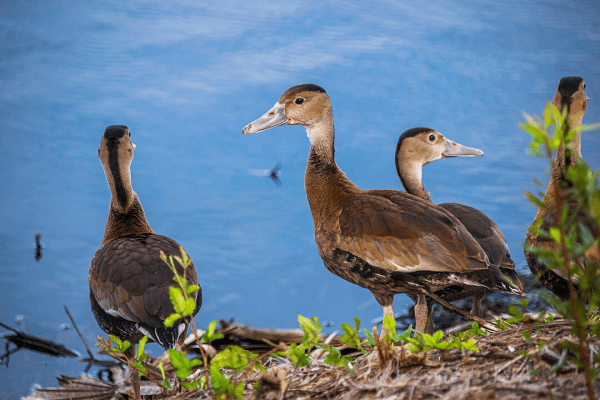
These ducks are very common in Florida and can be spotted in various places throughout the state. They live here all year round, with their numbers peaking in summer. You can find them in marshes, lakes, rice fields, and swamps, including locations like Corkscrew Swamp Sanctuary.
11. Fulvous Whistling-duck
- Scientific name – Dendrocygna bicolor
- Lifespan – 11 years
- Size – 17.7 to 20.8 in
- Weight – 25.1 to 37 oz
- Wingspan – 33.4 to 36.6 in
- Status – Least concern
Male Fulvous Whistling-ducks have dark backs with barring, black upper wings, and buffy orange heads and undersides. Their bills are blue-grey, and their flanks are streaked white. They have dark underwings, a unique white “U” shape on the rump, and greyish streaks with whitish spots on their necks.
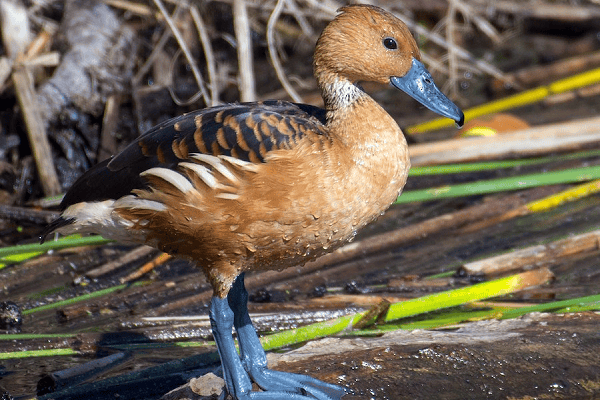
Females look much like males but with a darker crown and rear neck.
You can spot Fulvous Whistling-ducks year-round in Florida, where they’re relatively common. Look for them in ponds, marshes, and rice fields, such as at Lake Apopka.
12. Redhead
- Scientific name – Aythya americana
- Lifespan – 20 years
- Size – 16.5 to 21.3 in
- Weight – 22.2 to 52.9 oz
- Wingspan – 29.5 to 31.1 in
- Status – Least concern
Male Redheads have grey bodies with darker backs, black breasts and lower necks, and white bellies and underwings. Their upper necks and heads are chestnut-red, with light blue beaks and black tips. Their eyes are yellow-orange.
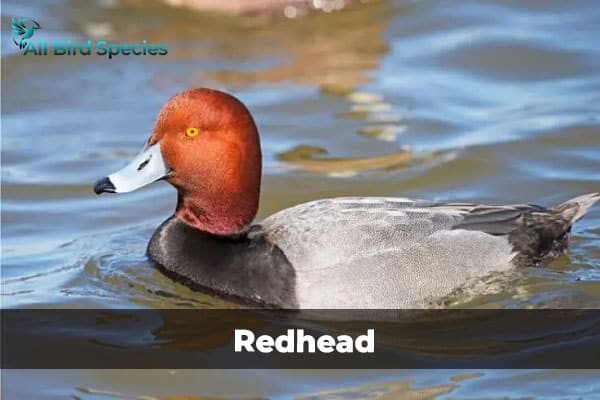
Females have greyish-brown backs and flanks, with brownish-grey wings. Their breasts are brown, and their bellies are white. Their heads and necks are yellowish-brown, with darker crowns and yellowish-brown eyes surrounded by pale eye rings.
Redheads are common in Florida, mainly in winter but sometimes year-round. You can find them in bays and lakes, such as at Merritt Island National Wildlife Refuge.
13. Lesser Scaup
- Scientific name – Aythya affinis
- Lifespan – 18 years
- Size – 15.3 to 18.1 in
- Weight – 16 to 38.4 oz
- Wingspan – 26.8 to 30.7 in
- Status – Least concern
Male Lesser Scaups have white bellies and flanks, with black necks, upper mantles, breasts, tails, and vents. Their backs are grey with black and white barring, and their upper wings are dark with a broad white bar. Their heads are dark and shiny, with light blue beaks and black tips, and yellow eyes.
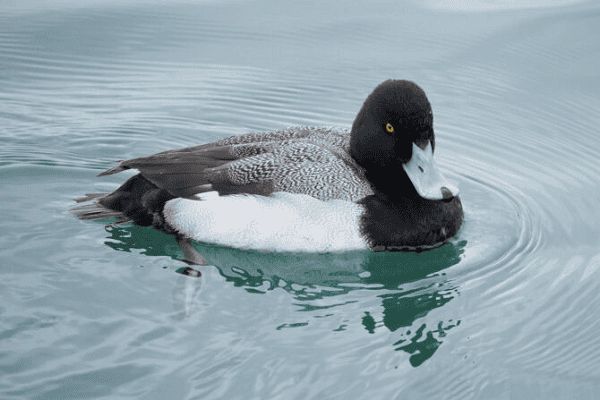
Females have brown bodies with pale flanks and prominent white wing bars. Their heads are usually dark brown, with a white patch at the base of the bill. Their bills are blue-grey with black tips, and their eyes are deep yellow.
Lesser Scaups are common winter visitors to Florida, although some stay year-round. You can find them in various habitats, including wetlands, bays, lakes, and ponds, such as at Bald Point State Park.
14. Hooded Merganser
- Scientific name – Lophodytes cucullatus
- Lifespan – 14 years
- Size – 15.8 to 19.3 in
- Weight – 16 to 31 oz
- Wingspan – 23.6 to 26.0 in
- Status – Least concern
Male Hooded Mergansers have black upperparts, white bellies, and a blackish upper wing. They sport a distinctive rounded white crest with a black border, along with black and white stripes on the breast and reddish-grey flanks. Their heads are black with large white patches on the sides.
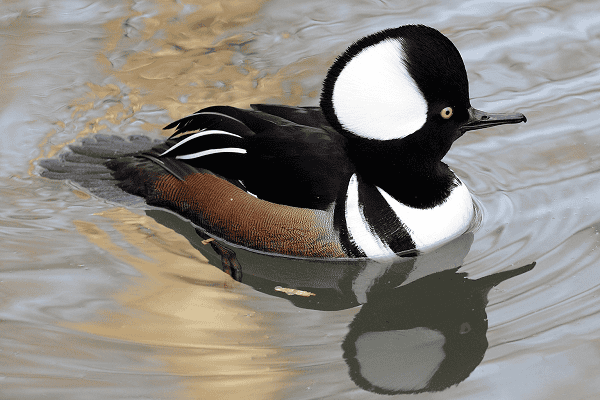
Females have brownish-grey plumage, lighter below and darker above, with dark beaks featuring a yellowish base and yellow eyes. Their crests are reddish-brown.
Hooded Mergansers are common in Florida during winter, especially on calm rivers, lakes, and ponds. You might spot them at Fort De Soto Park, among other birding sites.
Check Our Previous Articles:
| Green Birds in Sarasota Florida |
| Herons and Egrets in Florida |
| Egrets In Florida |
| Birds in Florida with Long Beaks |
15. Red-breasted Merganser
- Scientific name – Mergus serrator
- Lifespan – 9 years
- Size – 20.1 to 25.2 in
- Weight – 28.2 to 47.6 oz
- Wingspan – 26 to 29.1 in
- Status – Least concern
Male Red-breasted Mergansers have black backs, mantles, and hind necks, with white stripes on the sides of their necks. Their upper wings are black and white, with a large white patch and black-tipped wings. They also have a reddish breast band with black spots, white underparts, and grey flanks with black lines. Their heads and upper necks are dark and shiny green, with a dark green crest. Their eyes are red, and their slim bills are orange-red.
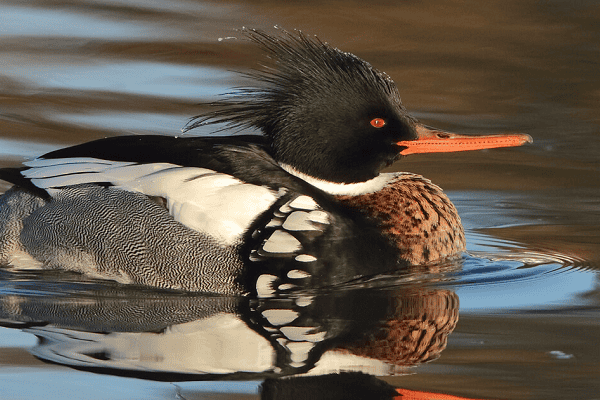
Females are grey-brown overall, with reddish-brown necks and heads and whitish breasts. Their upper wings are less white than males and show some grey. Their bills and eyes are a dull red.
Red-breasted Mergansers are common in Florida during winter and autumn, and sometimes in summer and spring. Look for them at places like Everglades National Park, where they hang out along rivers, the ocean, and lakes.
Frequently Asked Questions
Q1. What kind of ducks are in Florida?
Various species of ducks can be found in Florida, including Mallards, Wood Ducks, Mottled Ducks, and more.
Q2. Are there mallard ducks in Florida?
Yes, Mallard ducks can be found in Florida, particularly in wetlands, ponds, and other water bodies.
Q3. How long do Florida ducks live?
The lifespan of ducks in Florida varies depending on factors like species, habitat, and predation, but they generally live around 2 to 10 years.
Q4. Are ducks a protected species in Florida?
Yes, ducks are protected under Florida’s wildlife conservation laws, and hunting regulations apply to many species during certain seasons.

